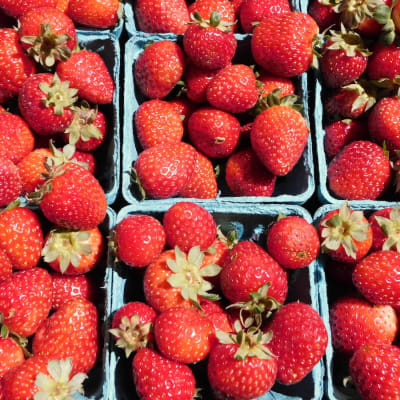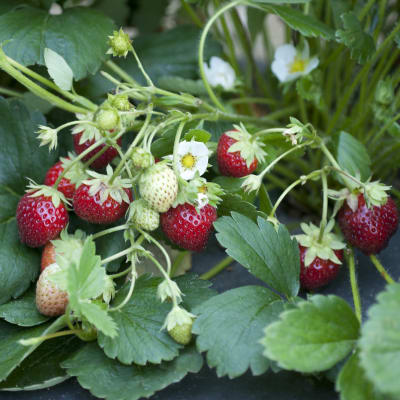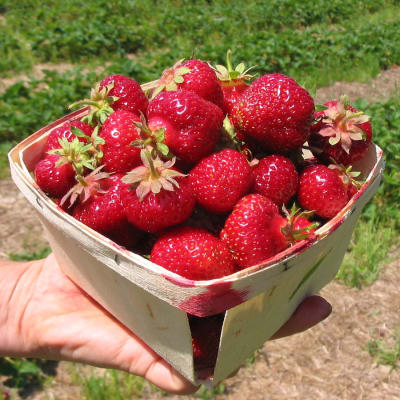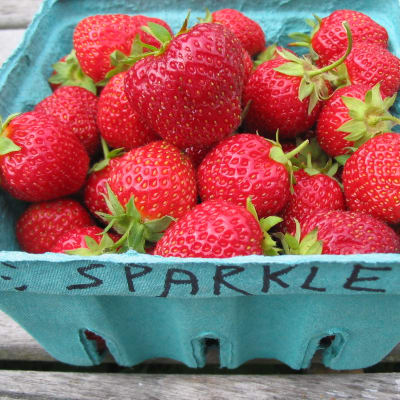Strawberries

Strawberries Fragaria spp.
A major highlight of every summer is picking strawberries. In central Maine strawberry season is usually around summer solstice.
Modern strawberries, developed about 1830, are a hybrid of F. chiloensis (native of Chile) and F. virginiana (native of North America). Royce Bringhurst of UC-Davis developed everbearing strawberries from wild plants found in Utah’s Wasatch Mountains. He crossed these with modern varieties and introduced the first everbearers in 1980.
50 plants will plant from 50–100'.
Everbearing Strawberries Everbearing, or day-neutral, strawberries flower regardless of day length as long as temperatures are between 35 and 85˚, and produce fruit from June to October. They are uncommonly productive—about 1 lb of fruit per plant the first year, and slightly less the second year. Productivity peaks in August the first year. The second year, berry size decreases in the hottest weather and increases in cooler weather. After second year, turn under and start again.
June-Bearing Strawberries When cultivated as described below, June-bearing plants begin bearing their second year and can produce for up to 5 years.
Growing Strawberries
- Soil: Well-drained and fertile. Avoid planting sites where tomatoes, peppers or potatoes have grown in the past 4 years.
- Sun: Full
- Pollination: You need only one variety.
- Planting and Spacing: Choose a site with good airflow. Plant at the same depth as they were in the nursery, with the middle of the crown at soil level. To optimize plant survival, plant crowns on cloudy days or in the evening. Soak roots in fish/kelp emulsion to lessen transplant shock.
- For Everbearing or Day-Neutral Strawberries: These heavy feeders benefit from 3–4" of manure worked into the soil prior to planting. Plant 6–12" apart. Remove flowers for the first 6 weeks, and remove all runners the first season. After harvest the second year, turn under and start again.
- For June-Bearing Strawberries: Use Matted Row system: Set plants 12–24" apart in rows 3' apart. Allow plants to produce runners freely and fill in the row. Remove all flowers the first year.
Harvest berries the second year, and immediately after harvest, fertilize liberally with compost or aged manure and renovate the row. By hand or with a tiller, narrow the row to 12" wide. Thin plants to 4–5" apart within the row. By this method a bed can last about 5 years.
- Mulching: In late fall mulch with hay to protect plants over winter. In spring pull mulch off plants and place between rows to keep fruit dry and clean in summer. A floating row cover may be used for frost protection.









